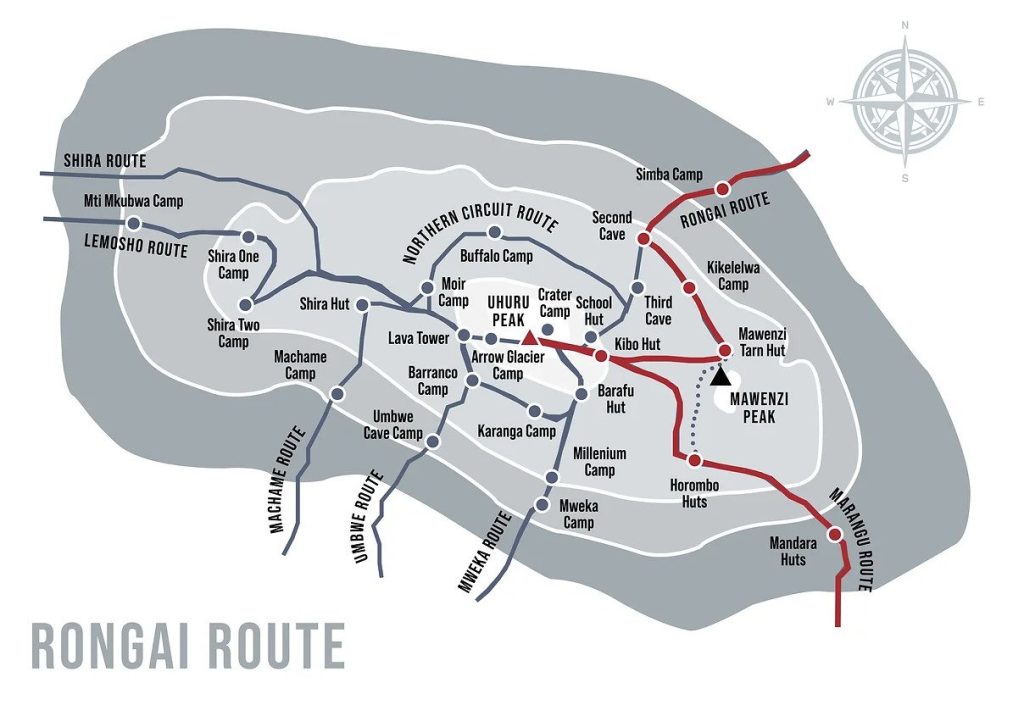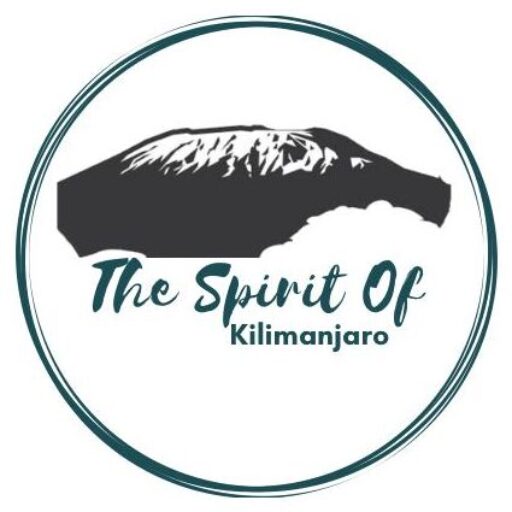Rongai Route
6 Days
MT.KILIMANJARO
Overview
Highlights of the Tour
Inclusions
Exclusions
Overview
The Rongai Route approaches Kilimanjaro from the northern side, near the Kenyan border, and is one of the least crowded trails on the mountain. This route offers a peaceful wilderness experience, passing through untouched forests, open moorlands, and alpine deserts before joining the Marangu Route for the final summit push. It is considered moderately difficult and provides steady acclimatization. The 6-day itinerary is ideal for climbers looking for a quieter and scenic journey with a good chance of reaching Uhuru Peak, the roof of Africa.
Highlights of the Tour
A quieter, less crowded trail approaching Kilimanjaro from the north
Diverse scenery: farmland, pine forests, moorlands, alpine desert, and glaciers
Unique views of Mawenzi Peak and the rugged northern slopes
Excellent acclimatization profile with gradual ascent
Unforgettable summit experience at Uhuru Peak (5,895m)
Inclusions
Professional English-speaking guides, cooks, and porters
All park fees, camping fees, and rescue fees
Meals (breakfast, lunch, dinner) and drinking water during the trek
Accommodation in tents and huts (as per itinerary)
Camping equipment (tents, chairs, tables, cooking gear)
Transfers to and from Kilimanjaro National Park gates
Oxygen cylinder & first aid kit for emergencies
Certificate of summit achievement
Exclusions
International and domestic flights
Tanzanian visa fees
Travel insurance (mandatory)
Personal trekking gear (sleeping bag, boots, poles, clothing)
Tips for guides, porters, and cooks
Hotel accommodation before and after the trek (unless specified)
Additional snacks and drinks (soft drinks, energy bars, alcohol)
Optional personal expenses (laundry, phone, souvenirs)
After registration at Rongai Gate, begin hiking through maize and potato fields before entering a lush pine forest. Keep an eye out for colobus monkeys and birds as you ascend to Simba Camp on the edge of the moorland zone.
Distance: 8 km | 4–5 hours
Habitat: Montane forest
Overnight at Simba Camp (tents).
Climb steadily through the moorland with expansive views of the plains below. The trail is open and drier compared to other routes. Arrive at Second Cave Camp with views of Kibo and the eastern ice fields.
Distance: 9 km | 5–6 hours
Habitat: Moorland
Overnight at Second Cave Camp (tents).
Continue trekking across the open moorland, passing unique alpine vegetation. The shorter day allows better acclimatization as you gain altitude gradually. Reach Kikelewa Camp, surrounded by giant groundsels and spectacular scenery.
Distance: 6 km | 4–5 hours
Habitat: Moorland
Overnight at Kikelewa Camp (tents).
A steep climb up grassy slopes brings you to the rugged landscape beneath Mawenzi Peak. The camp is set near a small tarn lake with dramatic views of Mawenzi’s jagged peaks.
Distance: 6 km | 4–5 hours
Habitat: Alpine desert
Overnight at Mawenzi Tarn Camp (tents).
Cross the barren alpine desert, with little vegetation but stunning views, as you head towards Kibo Hut at the base of the summit trail. Rest early in preparation for your midnight summit attempt.
Distance: 9 km | 5–6 hours
Habitat: Alpine desert
Overnight at Kibo Hut (tents).
Begin the summit push at midnight, ascending steep switchbacks to Gilman’s Point on the crater rim. Continue along the ridge to Uhuru Peak, the highest point in Africa. After celebrating at the summit, descend back to Kibo for rest, then further down to Horombo Hut for your final overnight on the mountain.
Distance: 21 km | 12–14 hours
Habitat: Arctic / Alpine desert / Moorland
Overnight at Horombo Hut (shared hut accommodation).

Get a Newsletter
* Join the newsletter to receive our best monthly deals
- CLIMB KILIMANJARO
- KILIMANJARO CLIMBING GUIDE
- MOUNT MERU CLIMB
- ARUSHA
- MOSHI
Enquire Today
Start Planning Your Tanzania Holiday
Please fill in all fields – an email will be sent with complete journey details.
